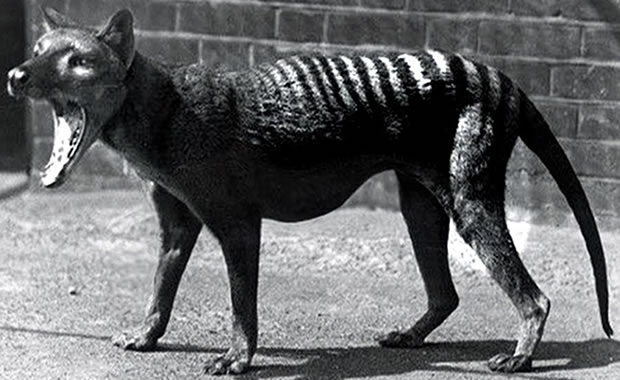
Dugong
|
Creature Profile
The dugong is a large marine mammal found in the coastal waters of the western Indo-Pacific and Australia. It closely resembles a manatee and is also called sea cow because it is the only marine mammal to graze exclusively on plants. Adults can reach over nine feet long and weigh close to 2,000 lb. Their skin is thick, tough, smooth and gray in color with short hair sparsely distributed over the body. Their front limbs are flipper-like and grow up to 17 inches long, and their tails resemble the tails of dolphins and whales. It is believed that mermaid legends may have originated from dugong sightings by sailors who mistook them for half-human/half fish creatures. Females are slightly larger than males, and they possess sharply downturned snouts which are needed for grazing and uprooting seagrasses from the seafloor.
Dugongs prefer shallow, tropical marine coastal waters where the waters are calm, such as bays and lagoons. They feed on phanerogamous sea grasses and are also reported to occasionally eat algae and crabs. Feeding is the principal activity of dugongs throughout much of the day, and they are known to leave feeding trails of bare sand and uprooted seagrasses. They are long-lived as well and can live up to 70 years. Some males have tusks and use them to fight over females when ready to mate. Breeding occurs year round, and females give birth to single calves after an estimated 12-month gestation period. The young remain with their mother for another 12 months.
Dugong populations have declined due to hunting for its meat and blubber. They are also hunted for oil, hides for leather, and their bones and teeth which are made into ivory artifacts, charcoal for sugar refining, and medicine. Also, some dugongs are killed by collisions with motor vessels. International trade has been banned, and the Australia population is legally protected. Some key populations can be found in protected areas where they can also be studied. The largest protected population can be found in Shark Bay, Western Australia.
Wikipedia Article

|
Wikipedia Article Copyright Notice: This article is licensed under the GNU Free Documentation License. It uses material from the Wikipedia article "Dugong". |
More Links about the Dugong:
Reference Links:Dugong - Wikipedia.com
May 9, 2017
Glenn, C. R. 2006. "Earth's Endangered Creatures - Dugong Facts" (Online). Accessed 7/26/2024 at http://earthsendangered.com/profile.asp?sp=133&ID=8.
Need more Dugong facts?





